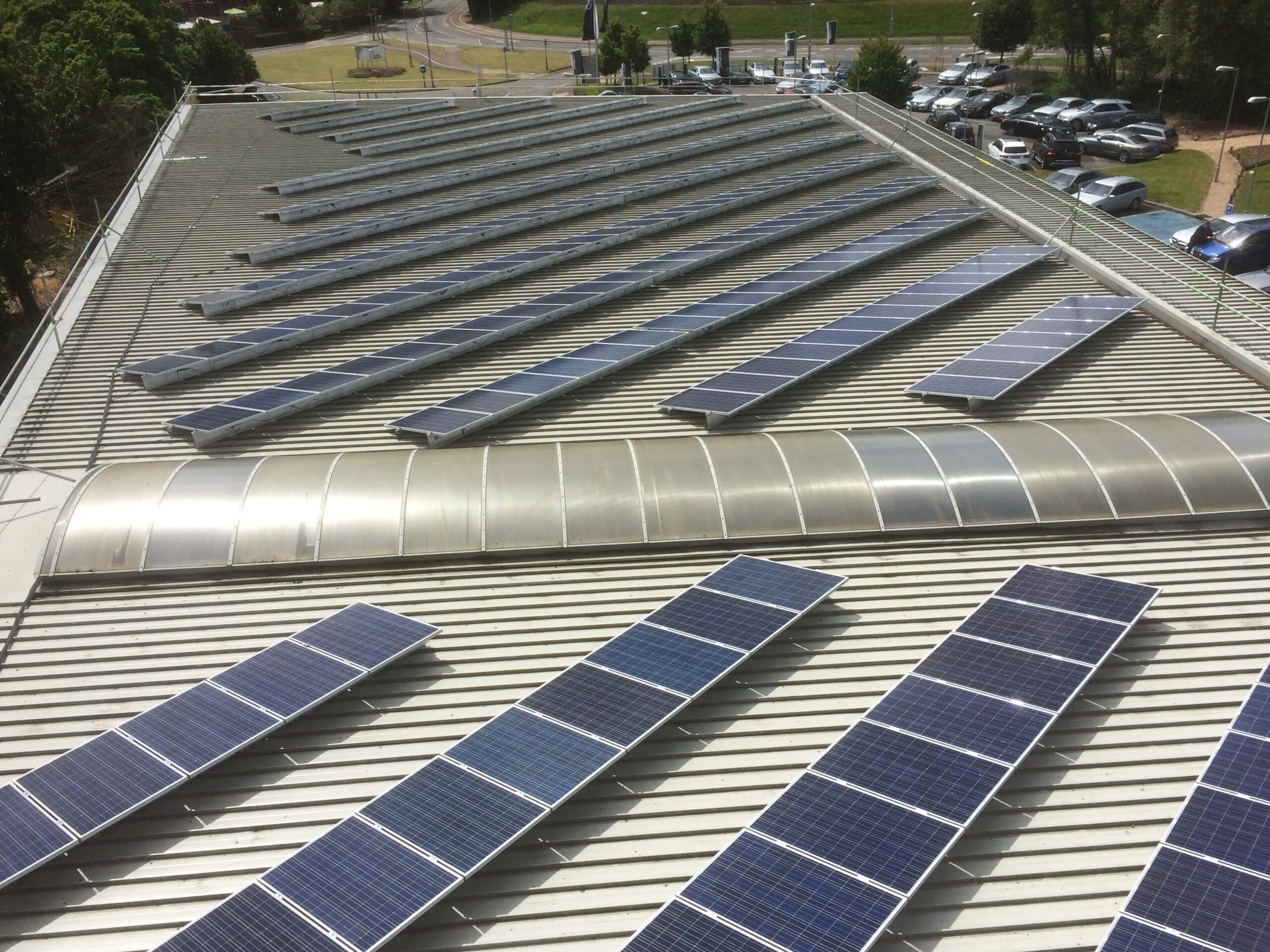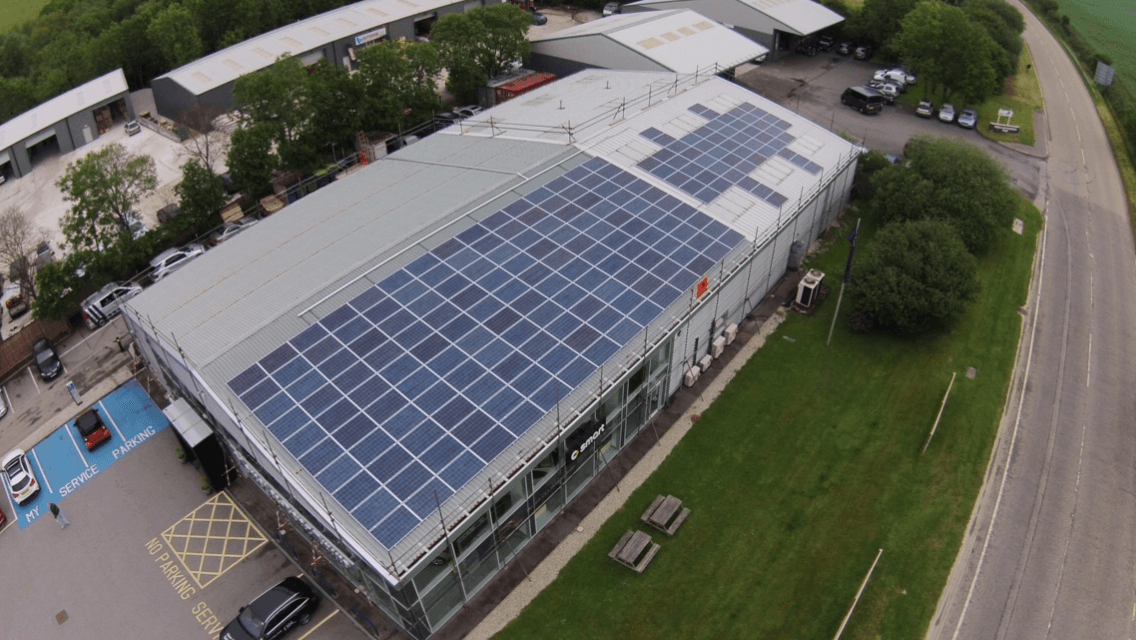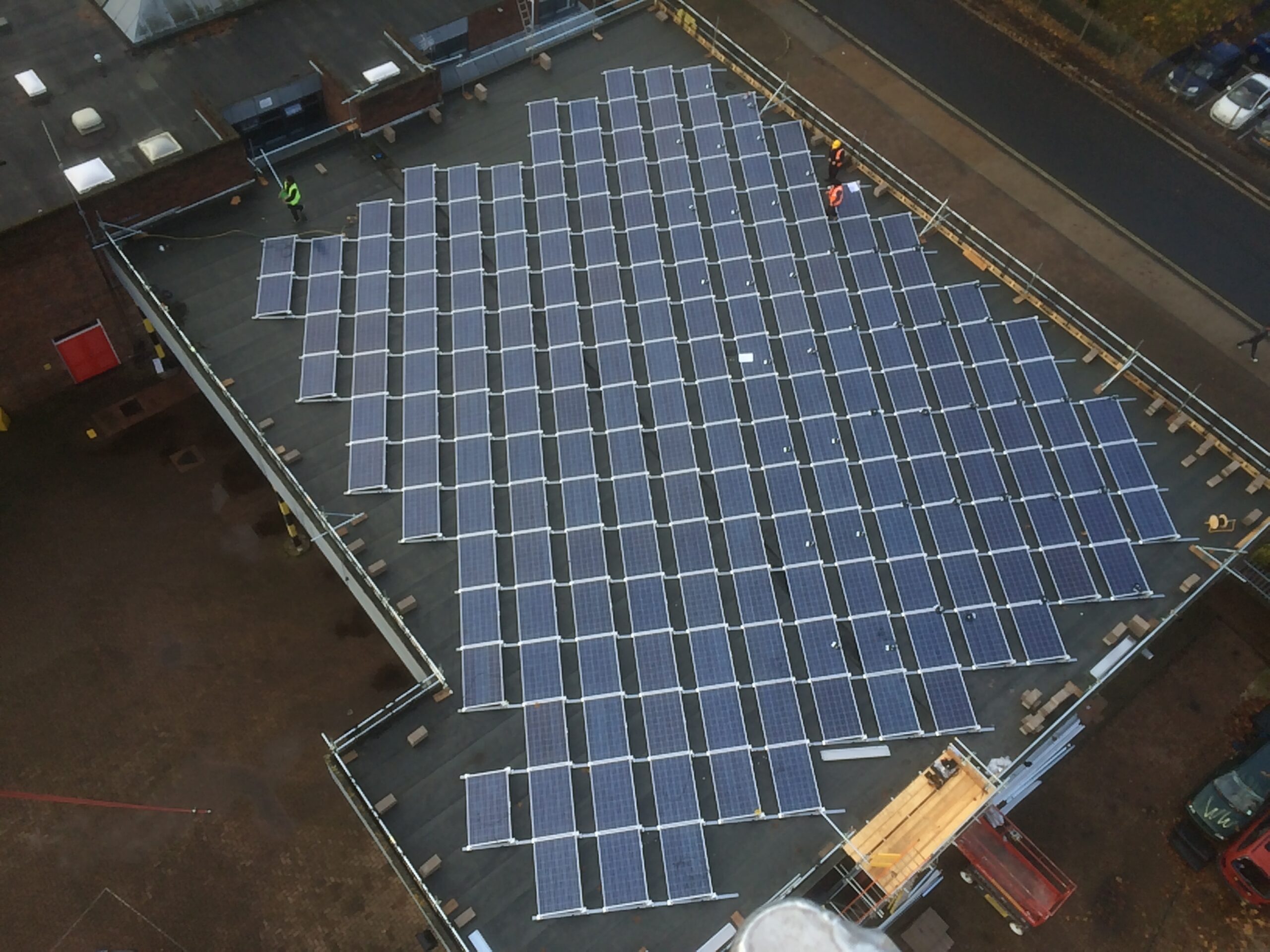Polycrystalline Solar Panels
Polycrystalline solar panels, like monocrystalline panels, are a type of photovoltaic (PV) panel used to convert sunlight into electricity. While they share the same fundamental principle of operation, there are some differences in their construction and performance.

Polycrystaline Solar Array at Mercedes-Benz, Taunton
Construction of Polycrystalline Panels:
Polycrystalline solar panels are made from silicon ingots that are formed by melting down multiple silicon crystals and then casting them into square molds. This process results in a panel with a textured, mosaic-like appearance, as opposed to the uniform, single-crystal structure of monocrystalline panels.
Each polycrystalline solar cell within the panel consists of multiple silicon crystals of varying sizes and orientations. These crystals are less perfectly aligned compared to the single crystal structure of monocrystalline cells, which is why polycrystalline cells often have a bluish hue.

Polycrystalline solar array at Mercedes-Benz, Truro
How Polycrystalline Panels Work:
The operation of polycrystalline panels is similar to that of monocrystalline panels. When sunlight strikes the surface of a polycrystalline solar cell, photons are absorbed by the silicon material, causing electrons to be excited and creating an electric current. Metal contacts on the top and bottom of the cell collect this current and channel it into wires, where it can be used as electricity.
While polycrystalline panels may have slightly lower efficiency compared to monocrystalline panels due to the presence of grain boundaries between the silicon crystals, they still offer a reliable and cost-effective means of generating solar power.

Polycrystaline Solar Array at Southsea Fire Station
Advantages of Polycrystalline Panels:
- Cost-Effectiveness: Polycrystalline panels are often more cost-effective to manufacture compared to monocrystalline panels, making them a popular choice for large-scale solar installations.
- Versatility: Polycrystalline panels are available in a variety of sizes and power ratings, making them suitable for a wide range of applications, from residential rooftops to utility-scale solar farms.
- Durability: Polycrystalline panels are known for their durability and resistance to harsh environmental conditions, making them a reliable option for long-term solar energy generation.
While polycrystalline solar panels may not offer the same level of efficiency as monocrystalline panels, they remain a viable and cost-effective option for harnessing solar energy. With their versatility, durability, and proven performance, polycrystalline panels play an essential role in the transition towards a more sustainable and renewable energy future.

